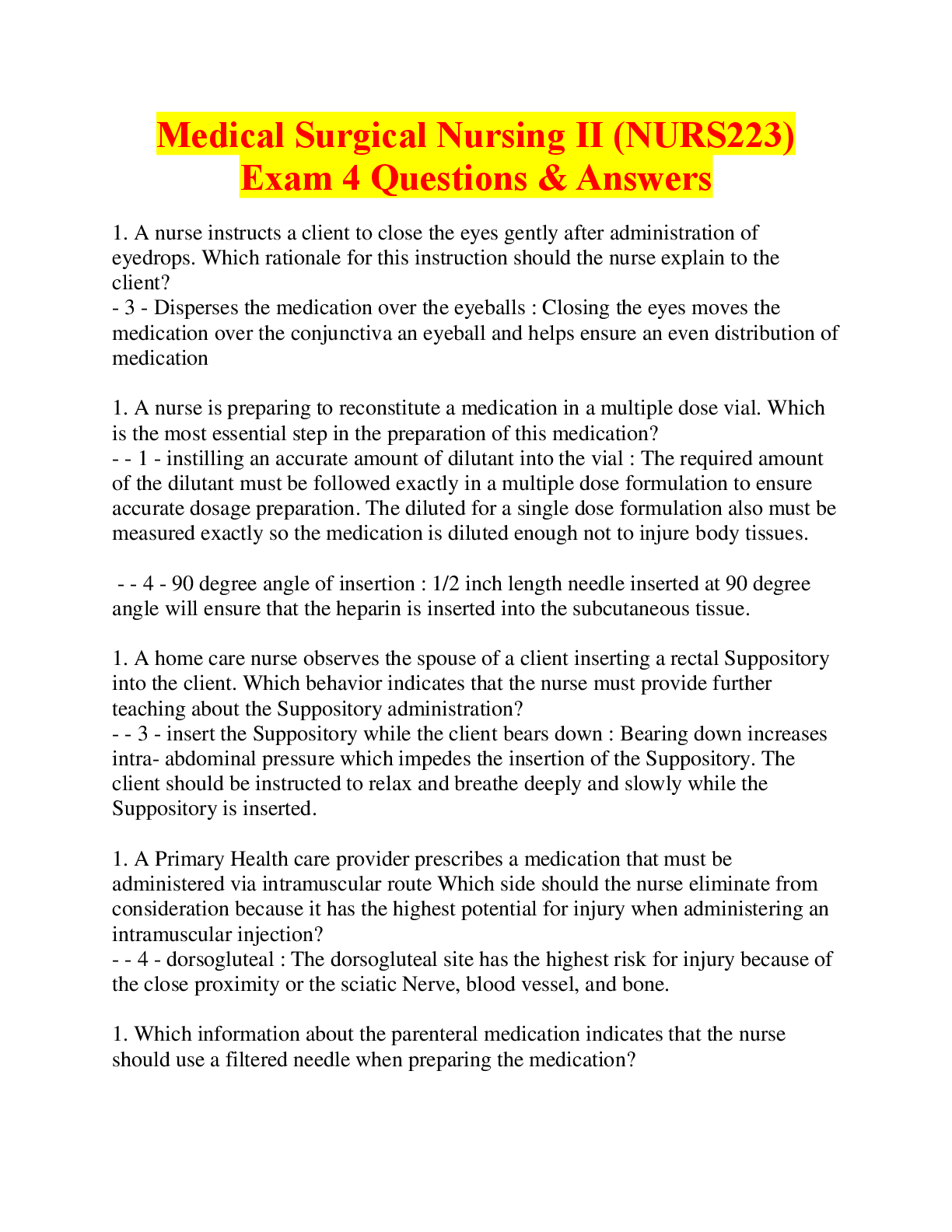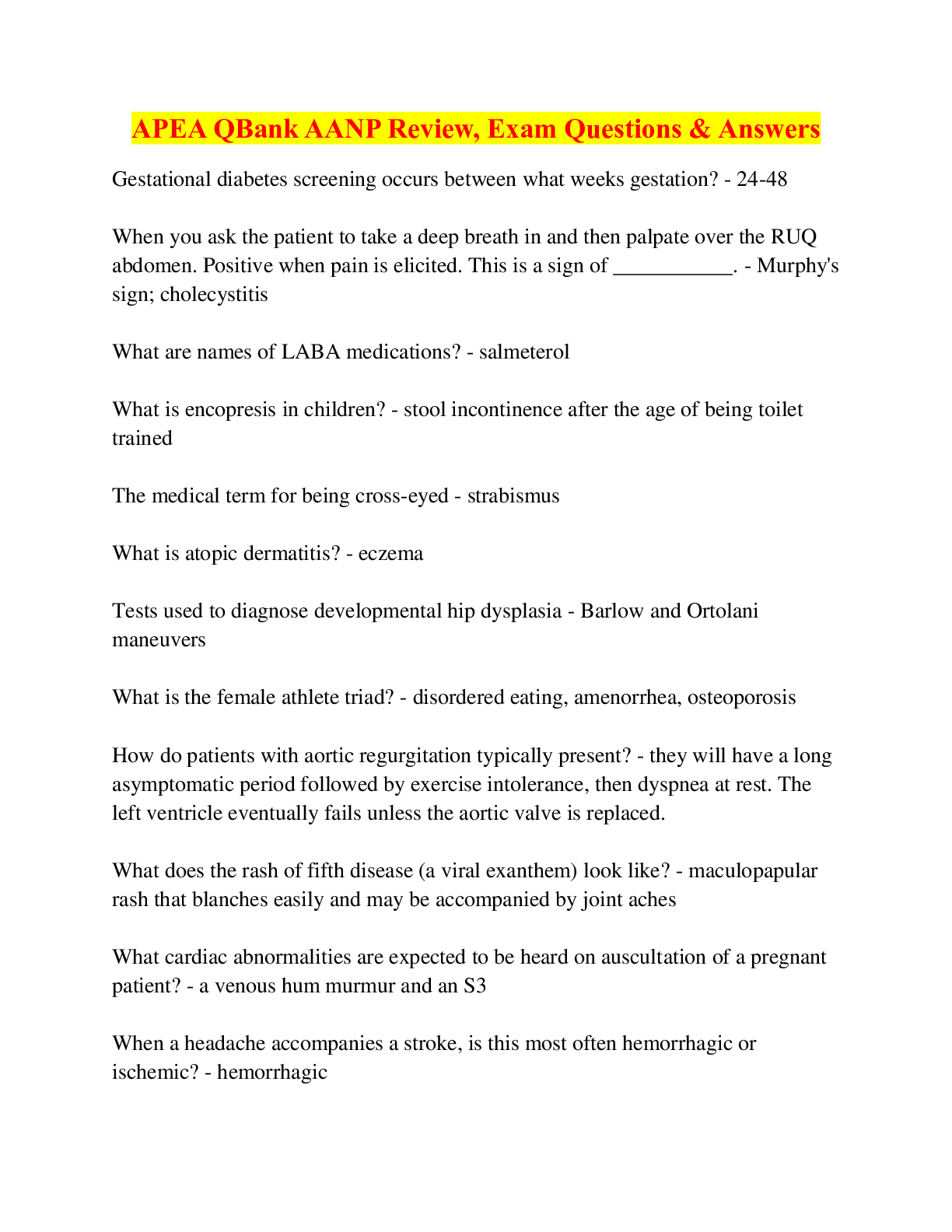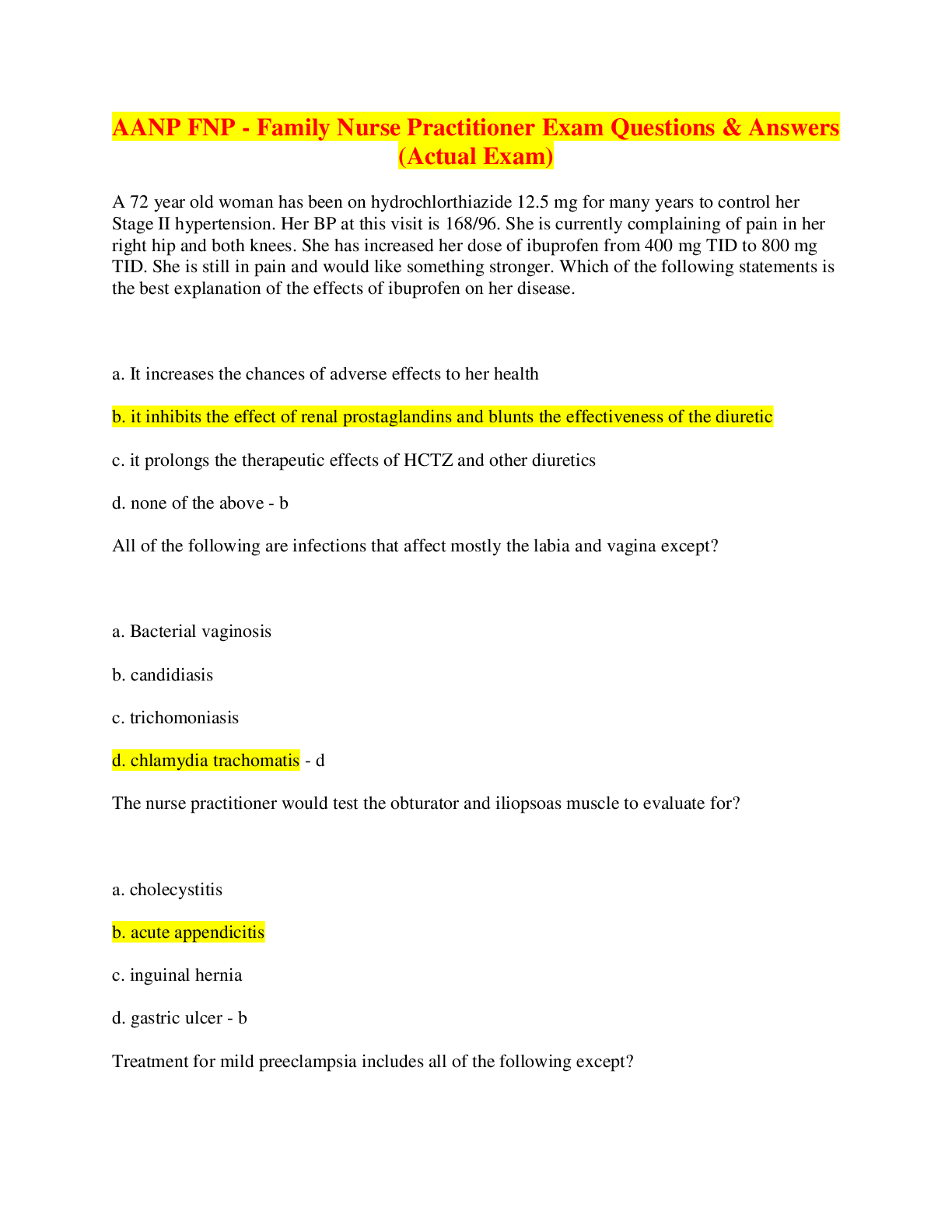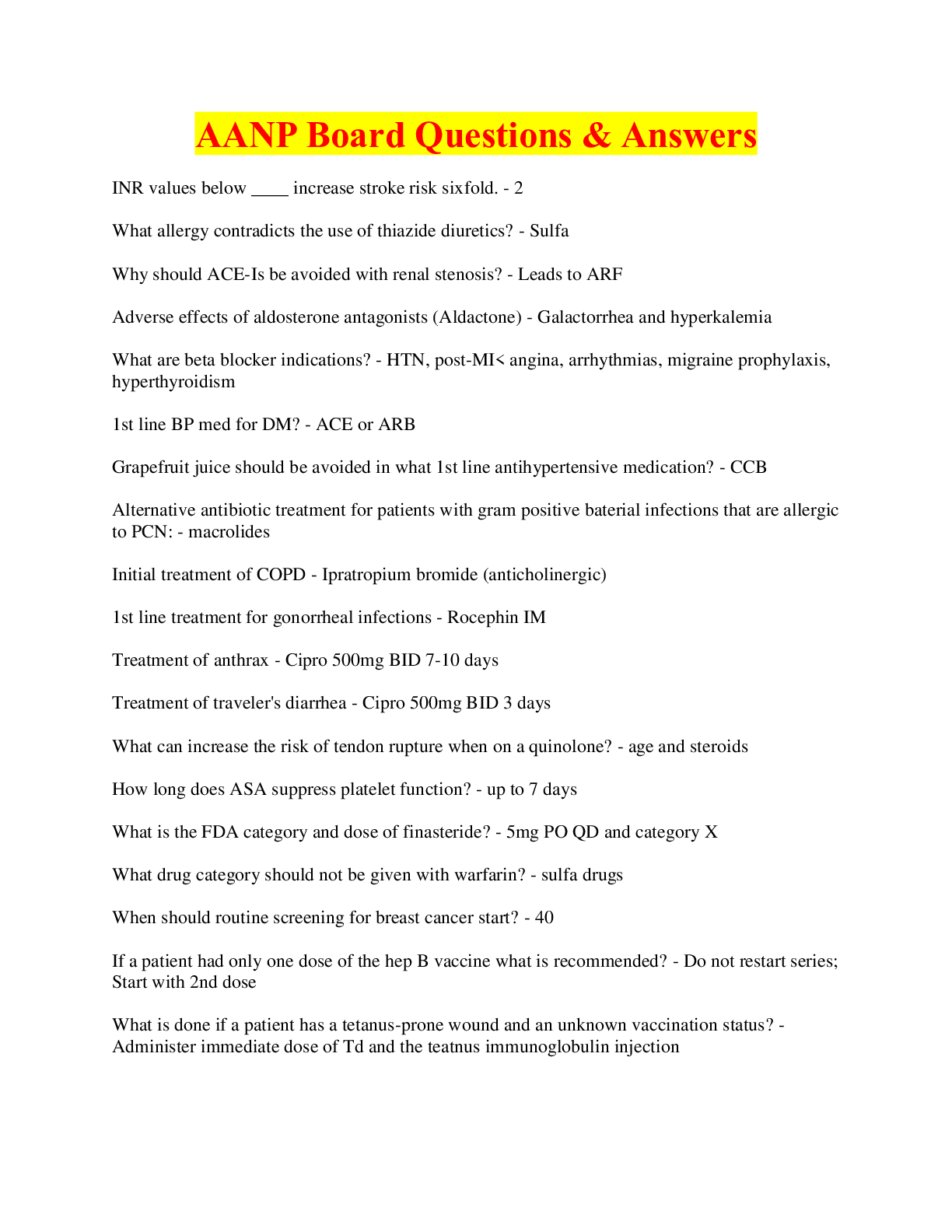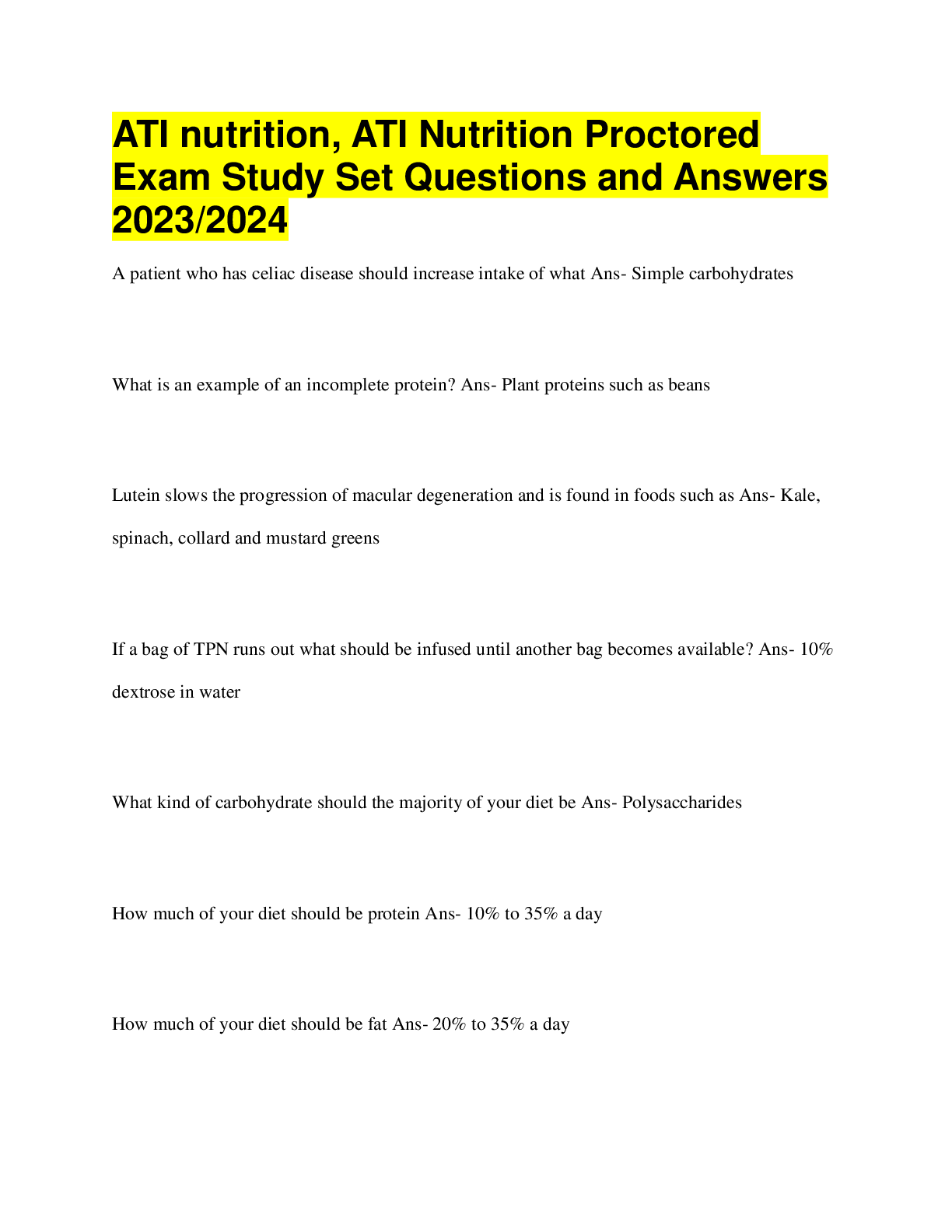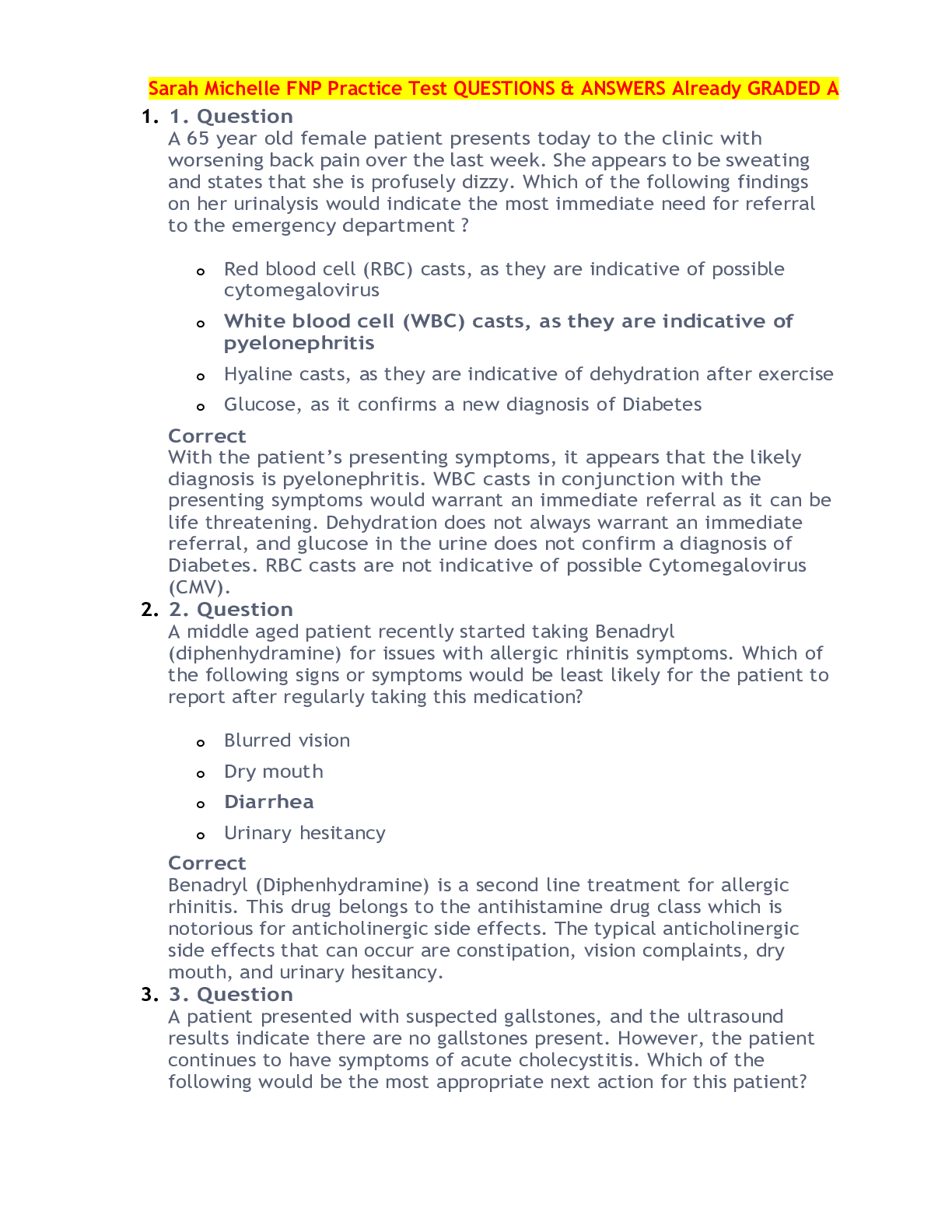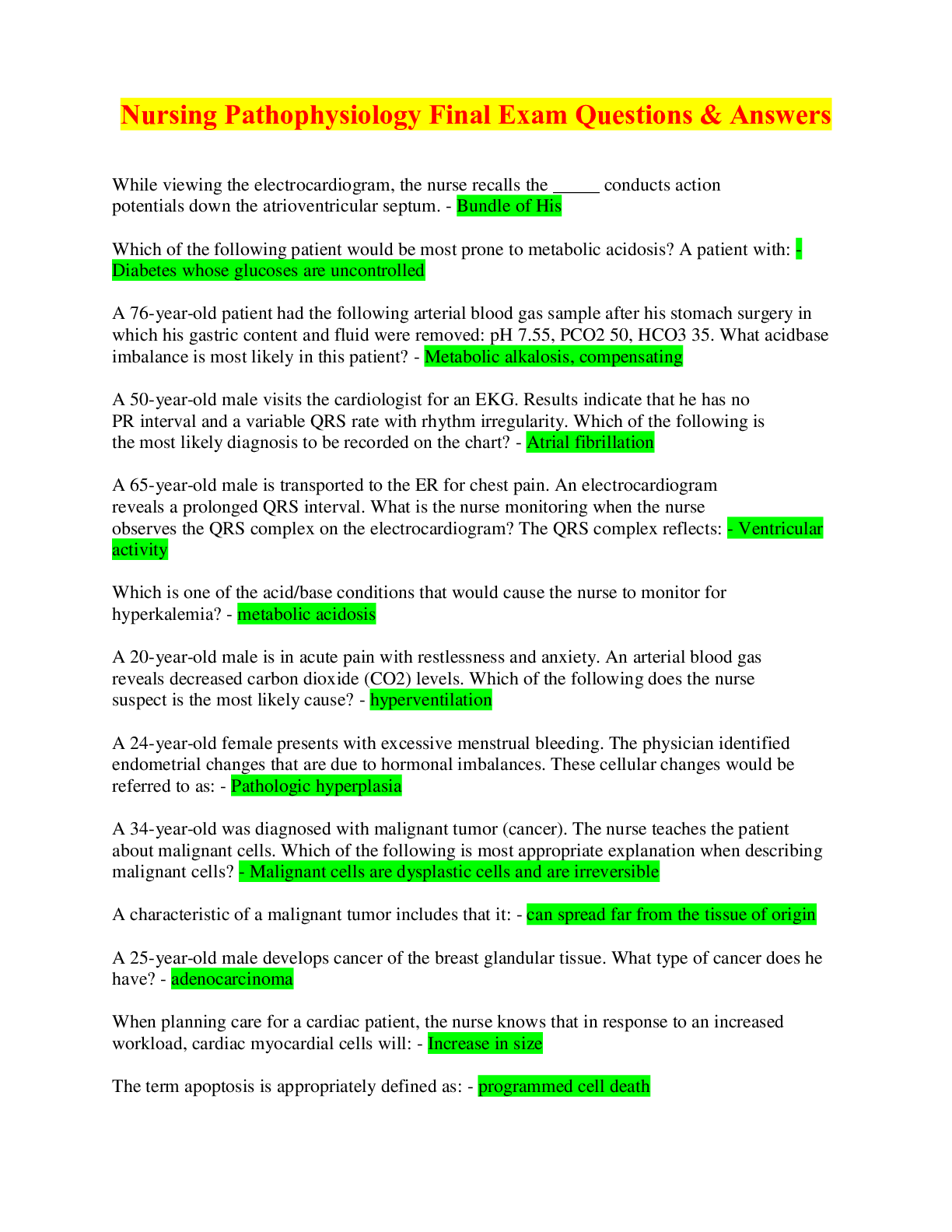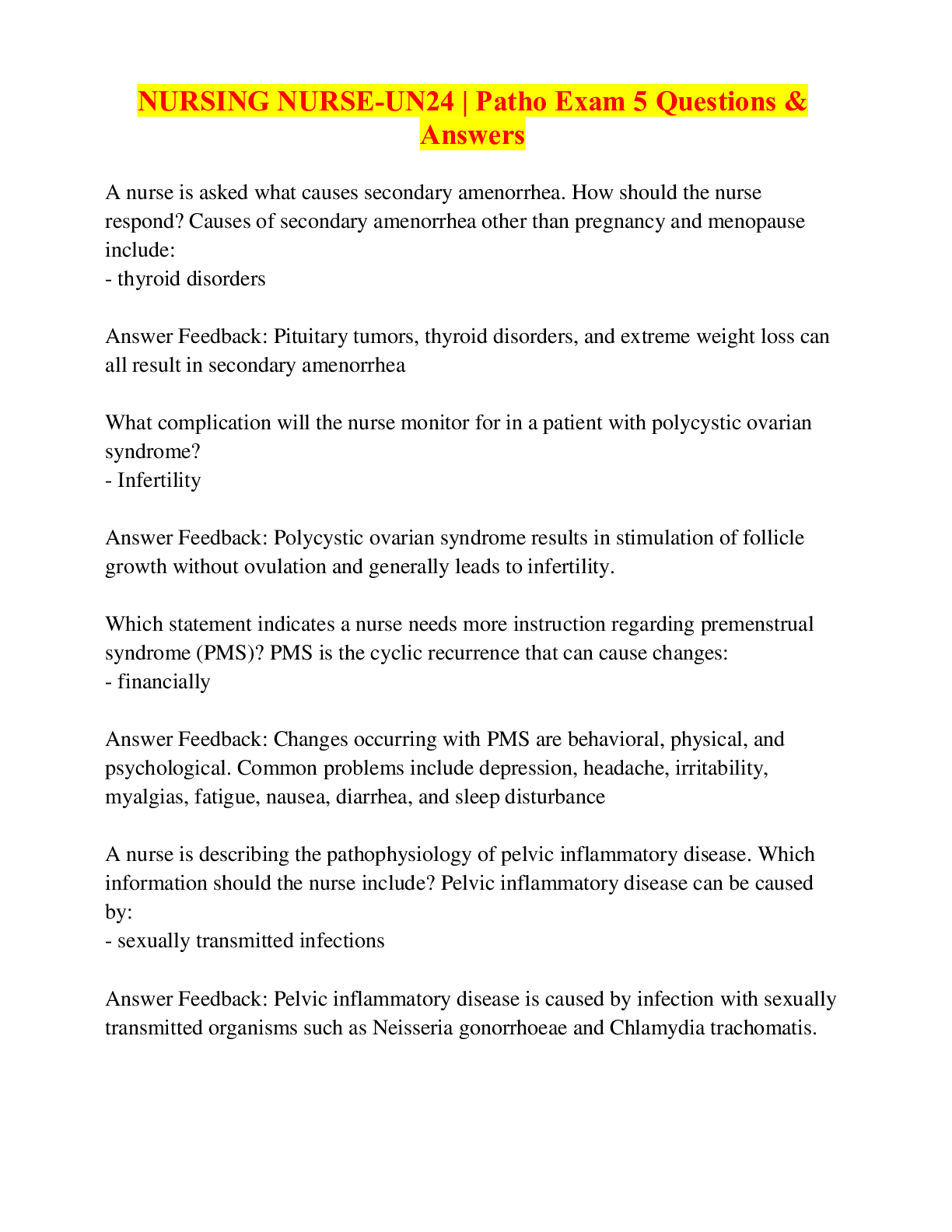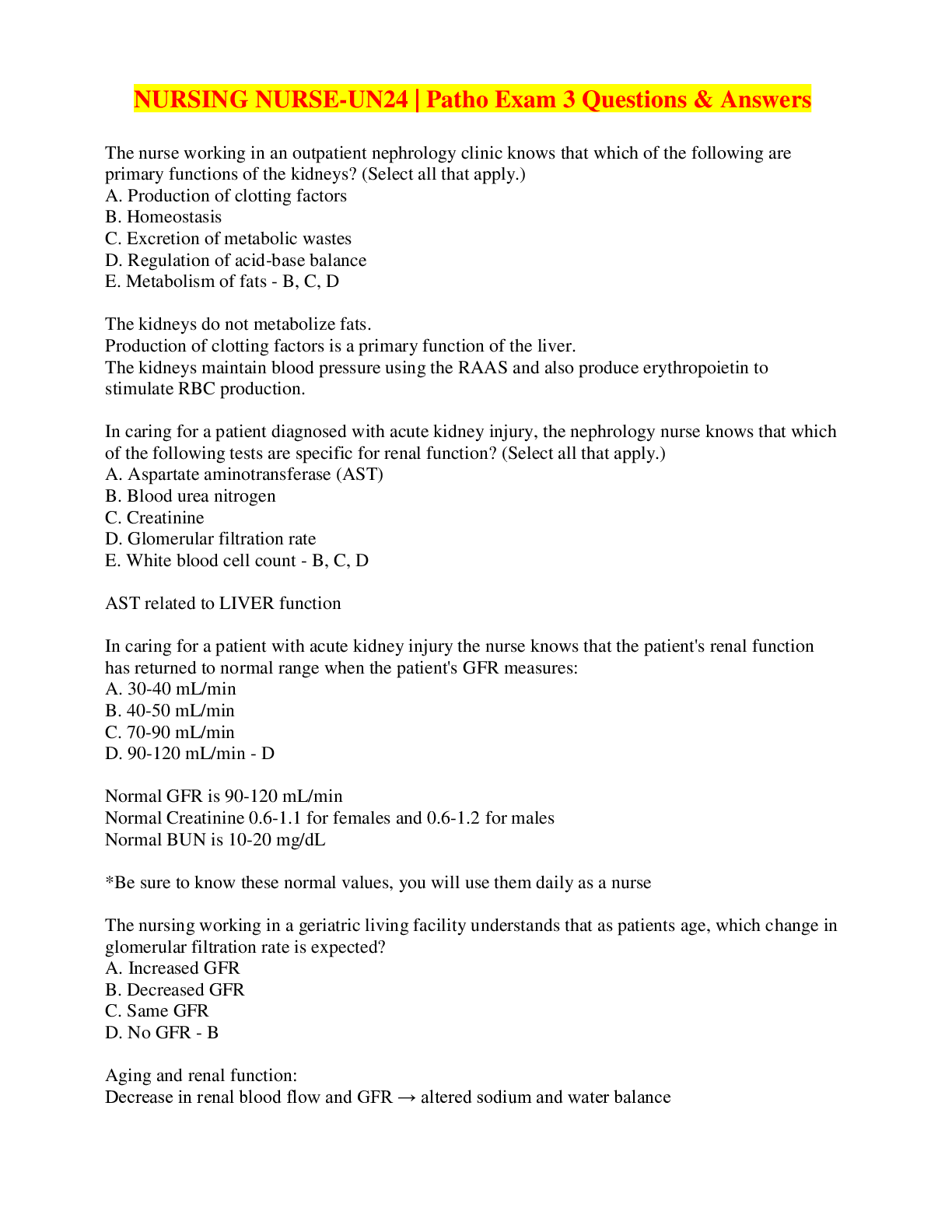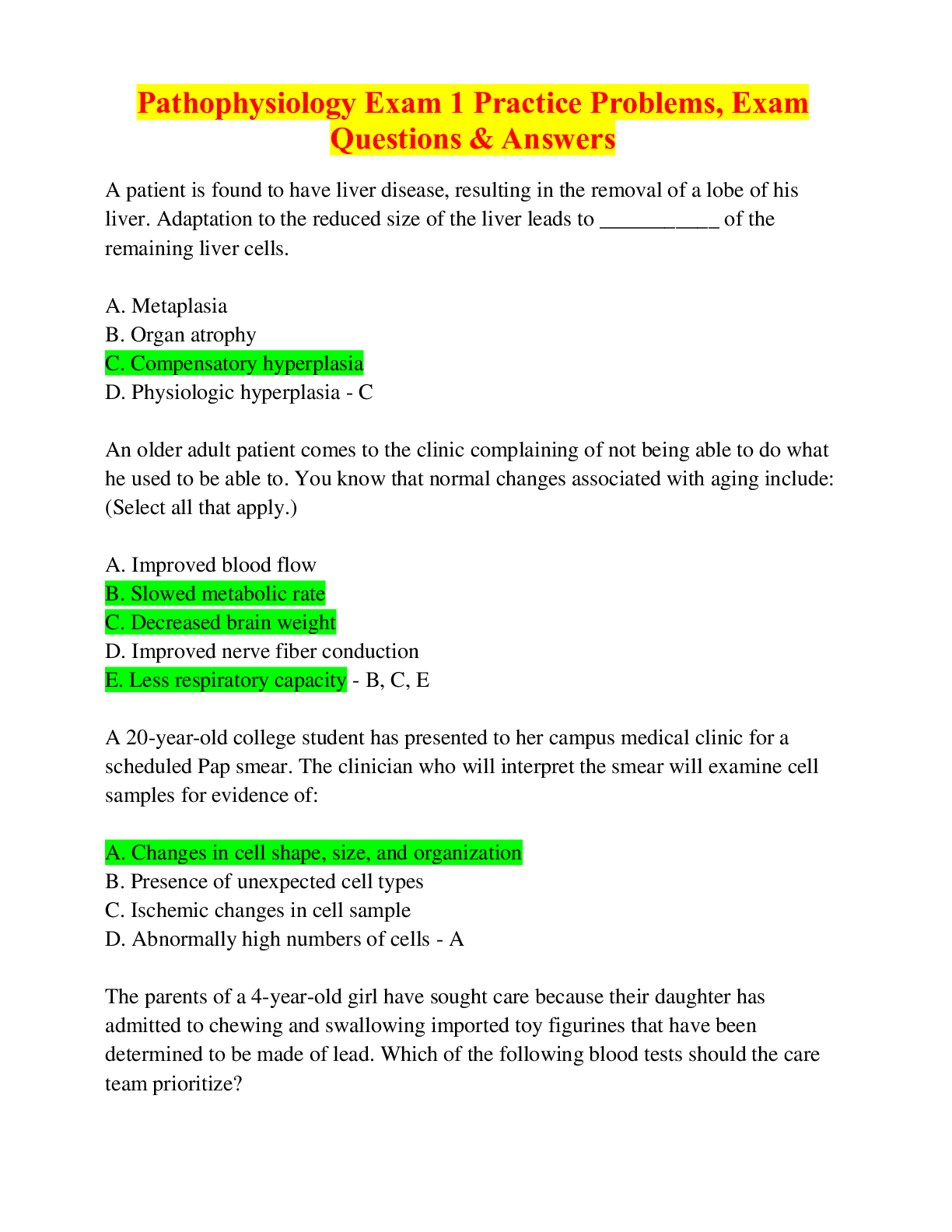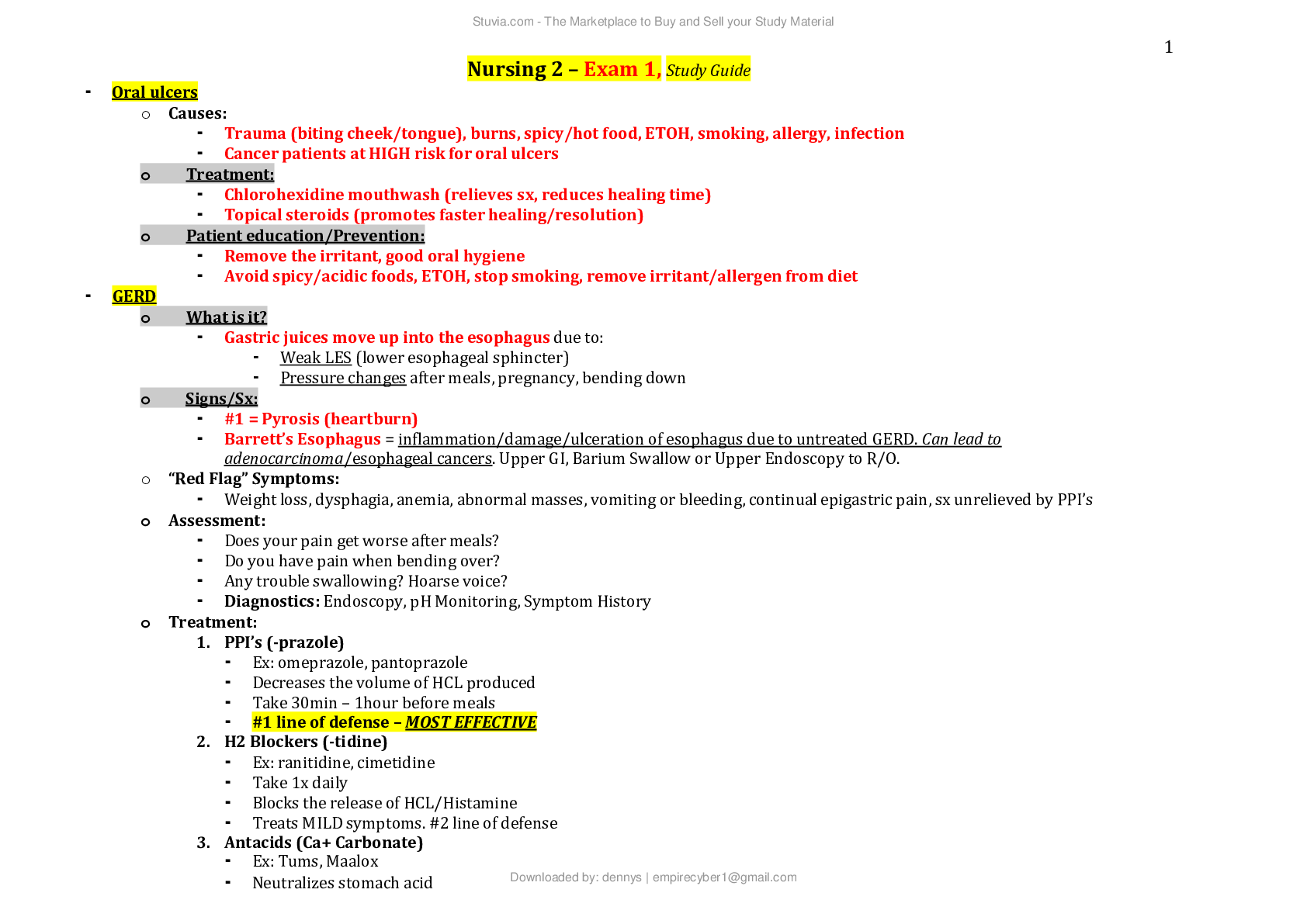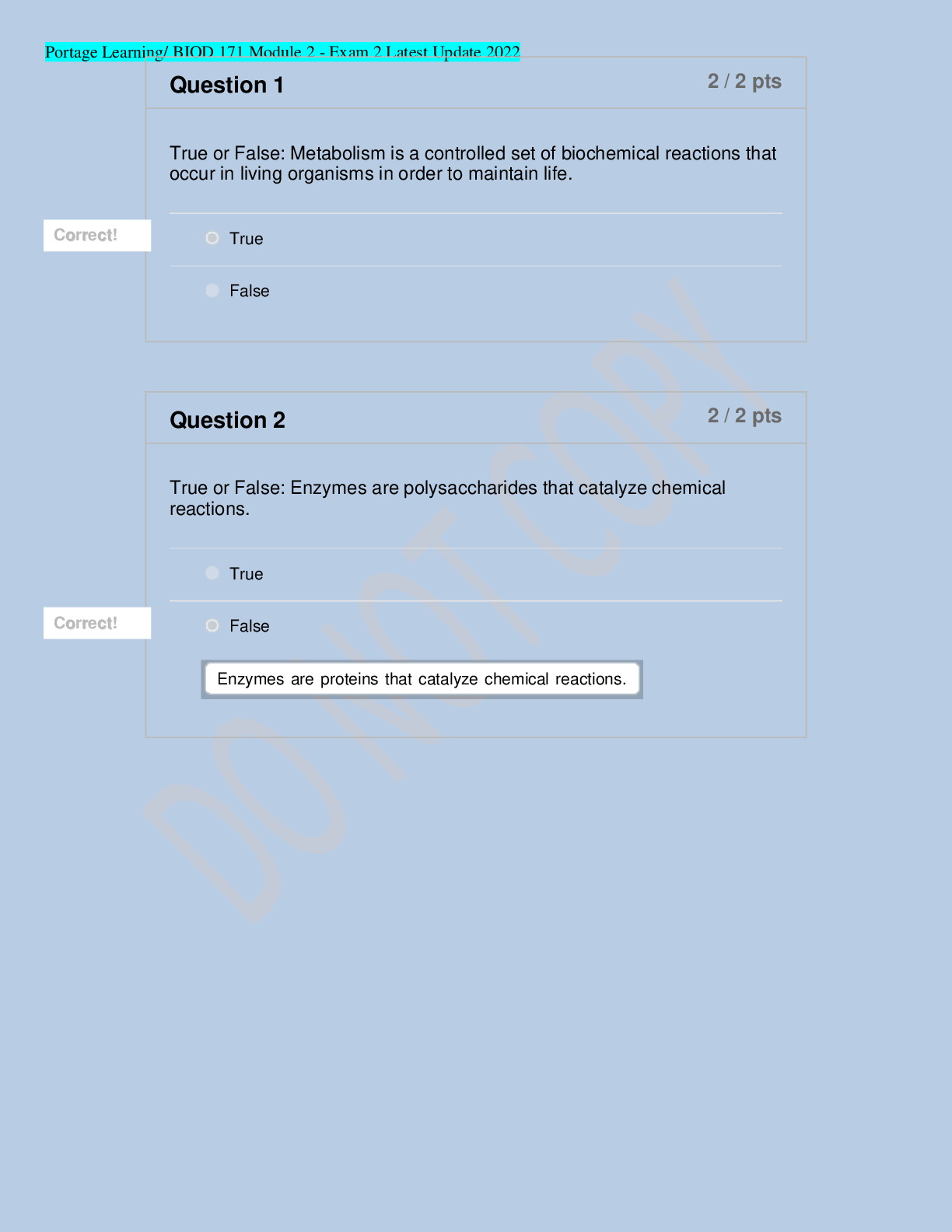Med Surg 2 - Exam 1 NCLEX Questions & Answers
Document Content and Description Below
Med Surg 2 - Exam 1 NCLEX Questions & Answers-1. A patient admitted with ACS has continuous ECG monitoring. An examination of the rhythm strip reveals the following characteristics: atrial rate 74 bea... ts/min and regular; ventricular rate 62 beats/min and irregular; P wave normal shape; PR interval lengthens progressively until a P wave is not conducted; QRS normal shape. The priority nursing intervention would be to a. perform synchronized cardioversion. b. administer epinephrine 1 mg IV push. c. observe for symptoms of hypotension or angina. d. apply transcutaneous pacemaker pads on the patient. - c. observe for symptoms of hypotension or angina. 2. The nurse is monitoring the ECG of a patient admitted with ACS. Which ECG characteristics would be most suggestive of myocardial ischemia? a. Sinus rhythm with a pathologic Q wave b. Sinus rhythm with an elevated ST segment c. Sinus rhythm with a depressed ST segment d. Sinus rhythm with premature atrial contractions - c. Sinus rhythm with a depressed ST segment 3. The ECG monitor of a patient in the cardiac care unit after an MI indicates ventricular bigeminy with a rate of 50 beats/min. The nurse would anticipate a. performing defibrillation. b. treating with IV amiodarone. c. inserting a temporary transvenous pacemaker. d. assessing the patient's response to the dysrhythmia. - d. assessing the patient's response to the dysrhythmia. 4. The nurse prepares a patient for synchronized cardioversion knowing that cardioversion differs from defibrillation in that a. defibrillation requires a lower dose of electrical energy. b. cardioversion is indicated to treat atrial bradydysrhythmias. c. defibrillation is synchronized to deliver a shock during the QRS complex. d. patients should be sedated if cardioversion is done on a nonemergency basis. - d. patients should be sedated if cardioversion is done on a nonemergency basis. 5. Which patient teaching points should the nurse include when providing discharge instructions to a patient with a new permanent pacemaker and the caregiver (select all that apply)? a. Avoid or limit air travel. b. Take and record a daily pulse rate. c. Obtain and wear a Medic Alert ID device at all times. d. Avoid lifting arm on the side of the pacemaker above shoulder. e. Avoid microwave ovens because they interfere with pacemaker function. - b. Take and record a daily pulse rate. c. Obtain and wear a Medic Alert ID device at all times. d. Avoid lifting arm on the side of the pacemaker above shoulder. 6. Important teaching for the patient scheduled for a radiofrequency catheter ablation procedure includes explaining that [Show More]
Last updated: 2 years ago
Preview 1 out of 35 pages
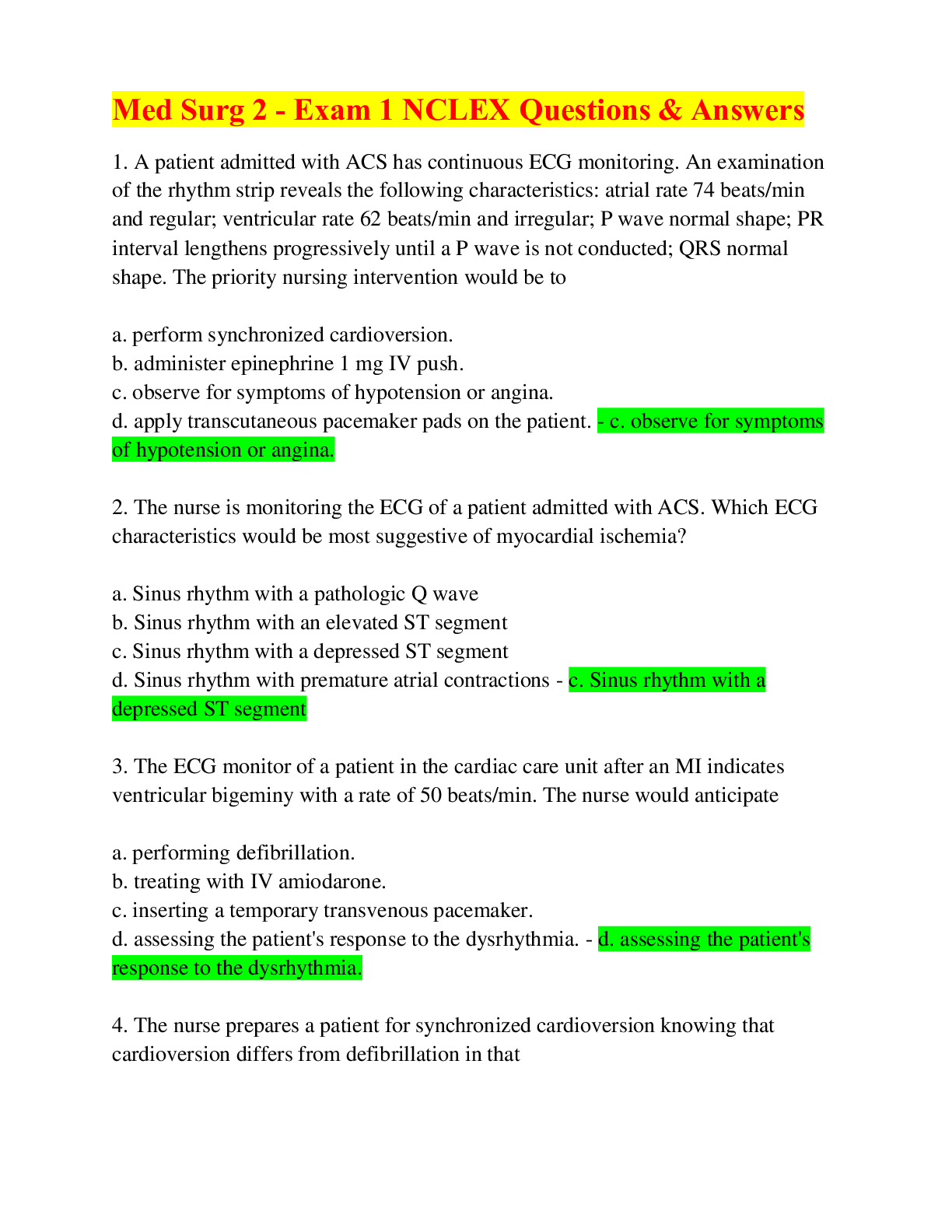
Buy this document to get the full access instantly
Instant Download Access after purchase
Buy NowInstant download
We Accept:

Reviews( 0 )
$13.50
Can't find what you want? Try our AI powered Search
Document information
Connected school, study & course
About the document
Uploaded On
Mar 02, 2023
Number of pages
35
Written in
Additional information
This document has been written for:
Uploaded
Mar 02, 2023
Downloads
0
Views
181

